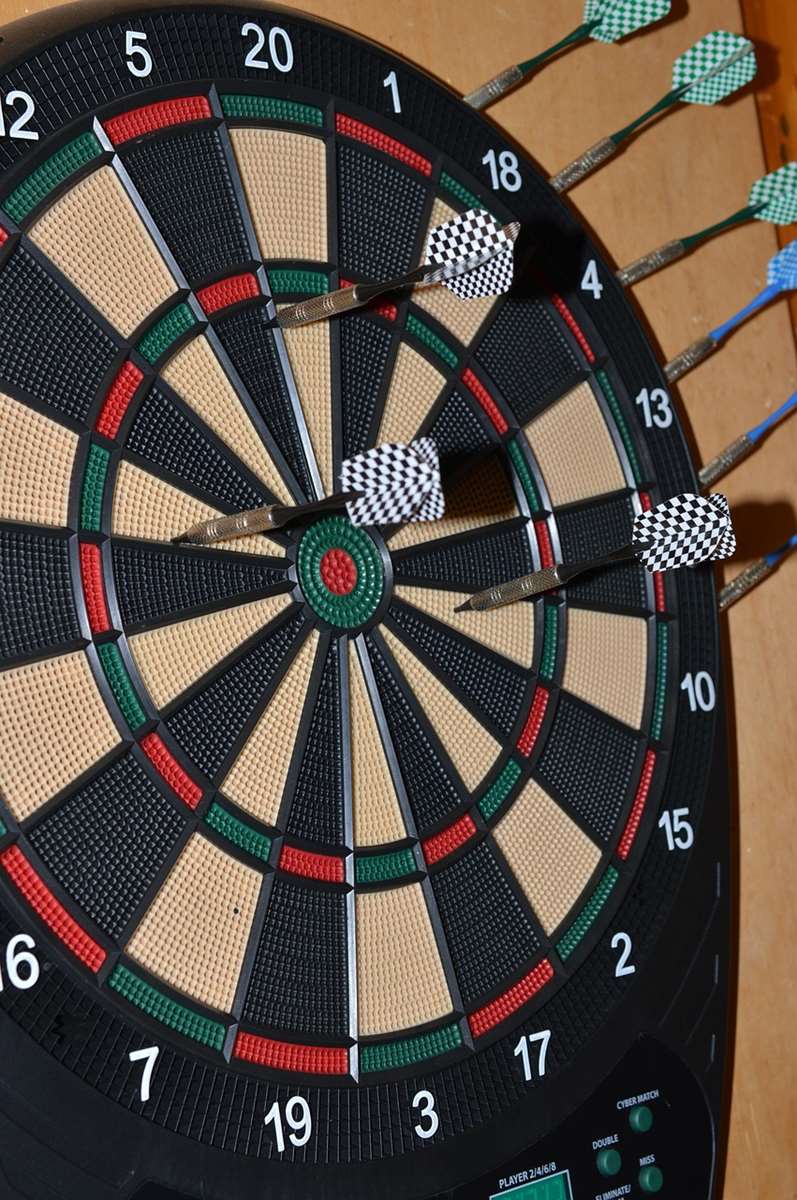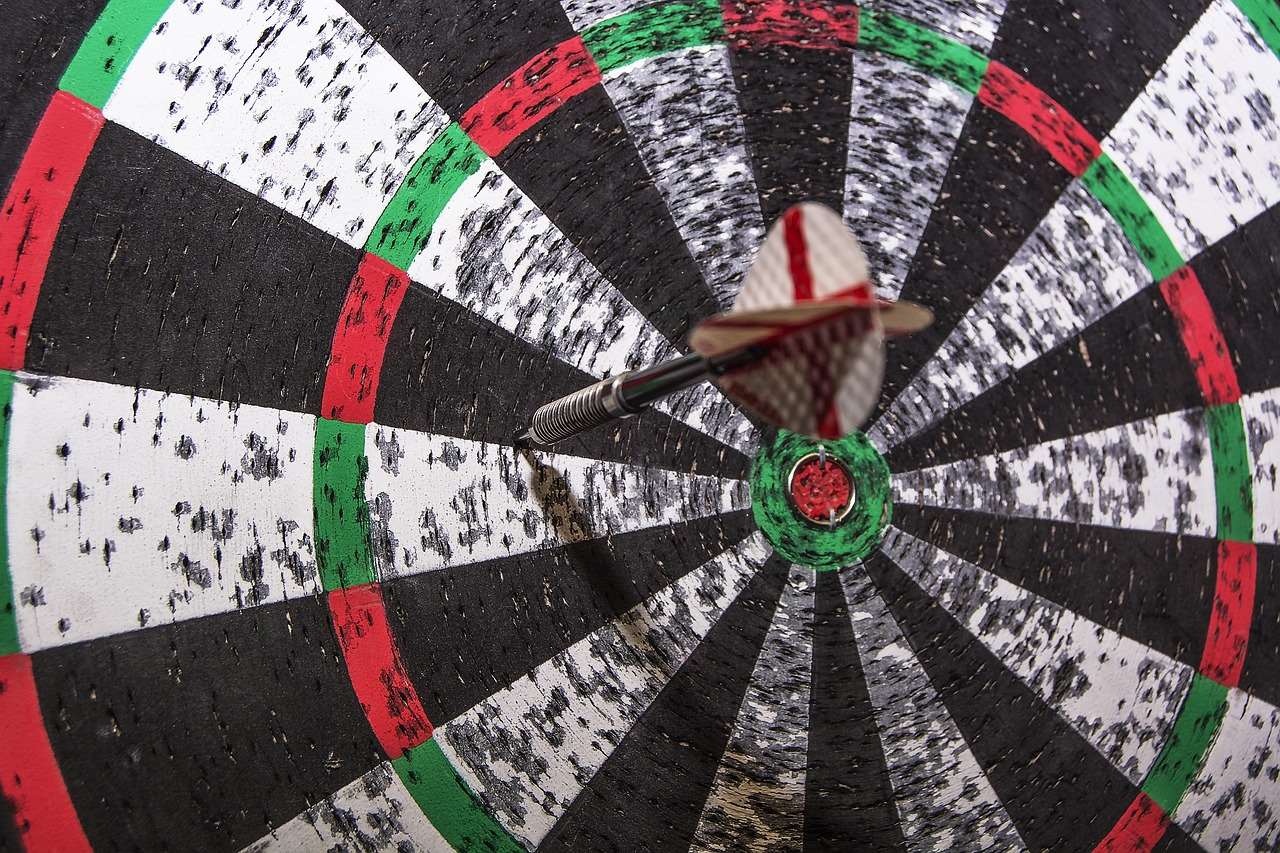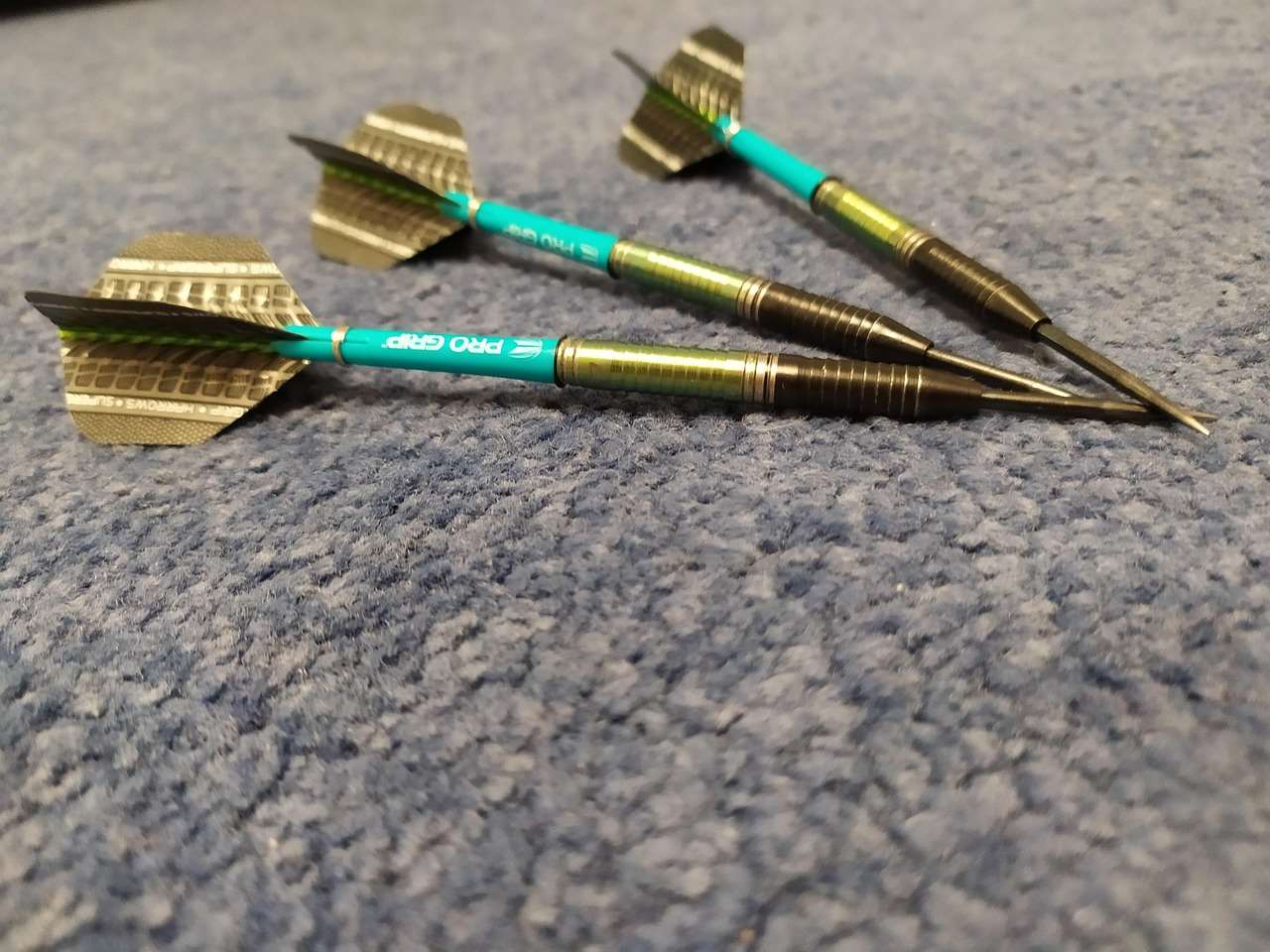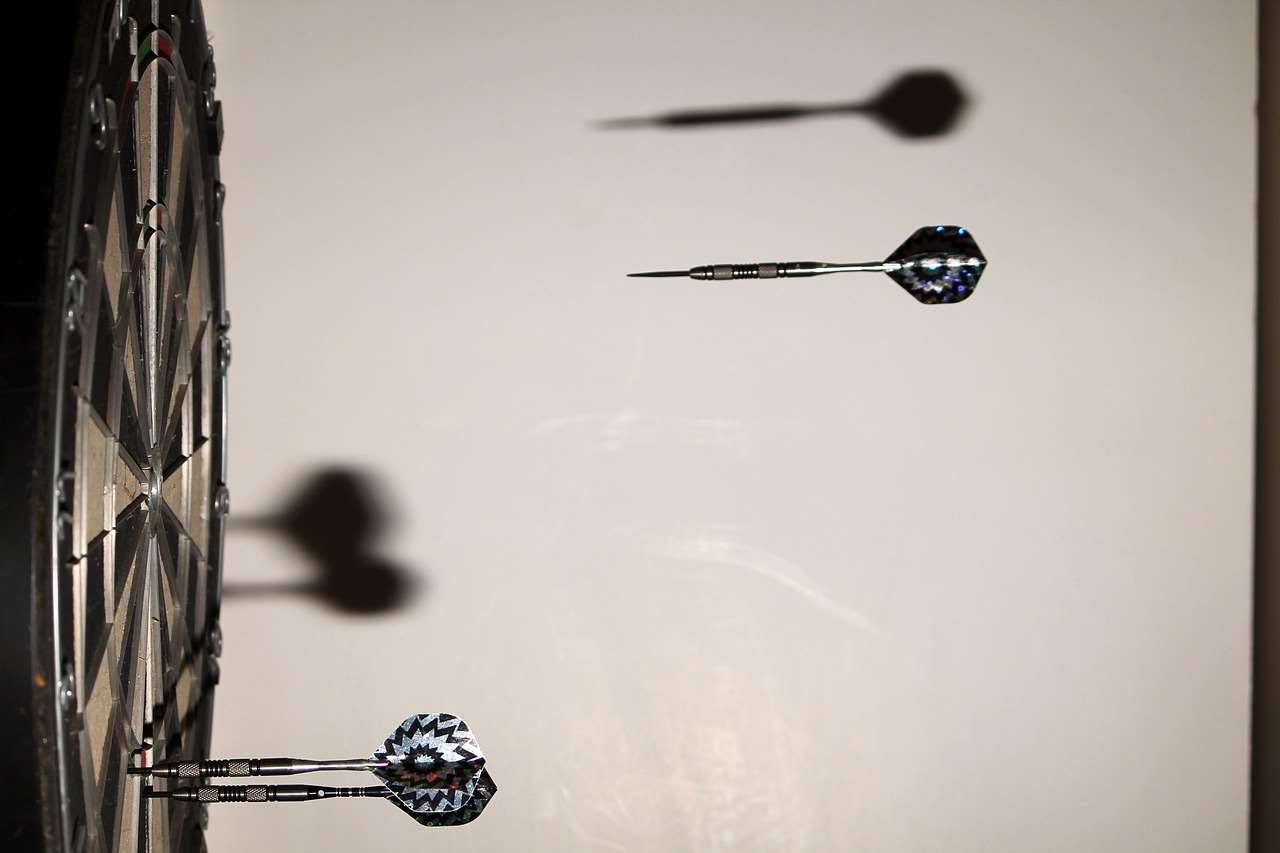Mastering playing darts in pubs hinges on understanding the etiquette, choosing the right equipment, and developing a consistent throwing technique. This article will guide you through everything from the basic rules to advanced strategies for dominating your local dartboard, along with practical tips for maximizing your enjoyment and skill.
⚠️ Still Using Pen & Paper (or a Chalkboard)?! ⚠️
Step into the future! The Dart Counter App handles all the scoring, suggests checkouts, and tracks your stats automatically. It's easier than you think!
Try the Smart Dart Counter App FREE!Ready for an upgrade? Click above!
The Enduring Appeal of Playing Darts In Pubs
There’s a certain timeless charm to the clink of glasses, the low murmur of conversation, and the satisfying thud of a dart hitting the bullseye. Playing darts in pubs is more than just a game; it’s a social ritual, a friendly competition, and a chance to unwind after a long day. Its accessibility is a major factor in its continued popularity. All you need is a dartboard, a set of darts, and a willing opponent (or several!). The low cost of entry compared to other sports makes it a great option for anyone looking for a fun and engaging pastime.
The social aspect is undeniable. Pub darts leagues are a great way to meet new people, forge friendships, and become part of a community. Whether you’re a seasoned pro or a complete beginner, you’ll find a welcoming atmosphere at your local pub’s dartboard.

Essential Darts Equipment for Pub Play
While you can often use the house darts provided by the pub, investing in your own set can significantly improve your game. Here’s what you need to consider:
Choosing Your Darts
- Weight: Darts typically range from 18 to 30 grams. Experiment to find a weight that feels comfortable and gives you good control. Heavier darts are generally more stable in the air, while lighter darts require less effort to throw.
- Material: Tungsten darts are more expensive but offer a slimmer profile for tighter groupings. Brass darts are a more affordable option for beginners.
- Grip: The grip affects how you hold and release the dart. Different types of grips (knurled, smooth, ringed) cater to different preferences. Try out different grips to see what works best for you.
- Flights: Flights affect the dart’s stability and trajectory. Larger flights provide more stability, while smaller flights offer more speed. Experiment with different shapes and sizes to fine-tune your dart’s flight path.
- Shafts: Shafts connect the flight to the barrel. Different lengths affect the dart’s balance and aerodynamics. Shorter shafts can improve grouping, while longer shafts offer more stability.
Dartboard Essentials
Most pubs will have a standard bristle dartboard. Ensure the board is properly mounted at the correct height (center of the bullseye at 5 feet 8 inches) and distance (7 feet 9 1/4 inches from the front of the board to the oche). A well-maintained board with clearly defined segments will enhance your playing darts in pubs experience.
Other Useful Accessories
- Dart Case: Protect your darts from damage with a dedicated dart case.
- Oche Mat: A mat with the correct oche distance marked will ensure consistent throws.
- Dart Sharpener: Keep your dart points sharp for better grip on the board.
Mastering the Basics of Darts Throwing Technique
Consistency is key in darts. Developing a solid throwing technique is crucial for improving your accuracy and scoring ability. Here’s a breakdown of the essential elements:
Stance
Find a comfortable and balanced stance at the oche. Most players stand with one foot slightly forward, pointing towards the dartboard. Experiment with different stances to find what feels most natural and allows you to maintain stability throughout your throw. A consistent stance will contribute to more accurate throws when playing darts in pubs.

Grip
Hold the dart with a firm but relaxed grip. Avoid gripping the dart too tightly, as this can lead to tension and inaccuracies. Experiment with different grip positions to find what gives you the best control and feel for the dart. A good grip should feel natural and allow for a smooth release.
Aiming
Focus your eyes on the target and align your body accordingly. Use your dominant eye to aim, and make sure your shoulder, elbow, and hand are all in line with the target. Visualisation can also help; imagine the dart flying directly to the desired location on the board.
Throwing Motion
The throwing motion should be smooth and controlled. Draw the dart back in a straight line, keeping your elbow high. Then, accelerate the dart forward, releasing it at the peak of your throw. Follow through with your arm, extending your hand towards the target. A smooth, controlled throwing motion is essential for accuracy and consistency.
Follow Through
Maintain your follow-through after releasing the dart. This helps to ensure that you are throwing the dart in a consistent manner. A good follow-through involves extending your arm fully towards the target after you release the dart.
Understanding the Rules of 501 and Other Popular Darts Games
While variations exist, 501 is the most common game played in pubs. Here’s a breakdown of the rules:
501
- Each player starts with a score of 501.
- Players take turns throwing three darts.
- The score for each round is subtracted from the player’s remaining total.
- The goal is to reach exactly zero.
- The final dart must be a double or the bullseye to win (called “doubling out”).
- If a player scores more than they need to reach zero, the round is a “bust” and their score remains the same.
Other Popular Games
- Around the Clock: Players must hit each number on the board in sequence, starting with 1 and ending with 20.
- Cricket: A strategic game where players aim to close out numbers by hitting them three times. Once a number is closed, only the player who closed it can score on that number.
- Shanghai: Players aim to score the highest possible score on a specific number (e.g., hitting a single, double, and triple 5 in one round).

Strategies for Improving Your Darts Game
Beyond mastering the basics, here are some strategies to help you elevate your darts game when playing darts in pubs:
Practice Regularly
Consistent practice is essential for improving your accuracy and consistency. Set aside time each week to practice your throwing technique and work on hitting specific targets. Even short, focused practice sessions can make a big difference over time.
Focus on Specific Targets
Instead of just throwing randomly at the board, focus on hitting specific targets. Aim for the treble 20, the bullseye, or specific doubles. This will help you develop your accuracy and control.
Analyze Your Throws
Pay attention to your throws and identify any areas where you can improve. Are you gripping the dart too tightly? Is your stance unstable? By analyzing your throws, you can identify and correct any flaws in your technique. Watching professional dart players can also offer valuable insights into technique and strategy; you might even want to experience attending live darts to witness this firsthand.
Manage Your Nerves
Nerves can affect your performance, especially in competitive situations. Practice staying calm and focused under pressure. Deep breathing exercises and positive self-talk can help you manage your nerves and maintain your composure. Remember that Darts Culture And Community Guide emphasizes the importance of sportsmanship and fair play.
Learn the Mental Game
Darts is as much a mental game as it is a physical one. Develop your focus, concentration, and mental toughness. Visualize success, stay positive, and don’t let mistakes get you down. A strong mental game can give you a significant edge over your opponents. If you’re getting tickets for darts events, be prepared for a mentally challenging atmosphere as well as a fun one.
Pub Darts Etiquette and Social Considerations
Playing darts in pubs is a social activity, so it’s important to be aware of the unwritten rules and etiquette. Here are a few guidelines to follow:
Be Respectful of Other Players
Wait for your turn to throw, and avoid talking or distracting other players while they are throwing. Show respect for your opponents, win or lose. Good sportsmanship is essential for creating a positive and enjoyable atmosphere.
Don’t Hog the Dartboard
Be mindful of other people who may want to use the dartboard. If there are others waiting, limit your practice time and allow them to have a turn. Sharing the dartboard ensures that everyone gets a chance to play.
Keep Your Voice Down
Avoid shouting or making excessive noise while others are playing. Maintain a respectful and appropriate noise level. Remember that the pub is a shared space, and other patrons may not appreciate loud or disruptive behavior. Consider the general atmosphere at live darts matches and try to emulate that respectful but spirited energy.
Offer to Buy a Round
It’s customary to offer to buy a round of drinks for your opponents after a game or match. This is a sign of good sportsmanship and a way to thank them for the game. Buying a round is a gesture of camaraderie and helps to foster a positive social atmosphere. Hospitality is key when playing darts in pubs.
Be a Good Sport
Win with humility and lose with grace. Avoid gloating or making excuses for your performance. Congratulate your opponents on their good shots, and accept defeat with a positive attitude. Good sportsmanship is essential for maintaining a friendly and enjoyable atmosphere. It’s important to remember the fan culture at live darts and how it emphasizes friendly rivalry and respect.

Advanced Darts Strategies and Tactics
Once you’ve mastered the basics, you can start exploring more advanced strategies to gain a competitive edge.
Checkout Strategies
Learn common checkout combinations and plan your throws accordingly. Knowing which numbers to aim for to leave yourself with a manageable double is crucial for winning games. There are many online resources and apps that can help you learn checkout strategies.
Blocking and Setting Up
Use your darts to block your opponent’s scoring opportunities or set yourself up for a high score. For example, if your opponent is close to a checkout, you can aim for the same number to prevent them from hitting it. Similarly, you can set yourself up for a big score by leaving yourself with a favorable combination on your next turn.
Reading Your Opponent
Pay attention to your opponent’s throwing style, tendencies, and mental state. This can give you valuable insights into their strengths and weaknesses, allowing you to adjust your strategy accordingly. Reading your opponent can also help you anticipate their next move and react accordingly. Good strategy is key when playing darts in pubs.
Varying Your Pace
Experiment with different throwing speeds to disrupt your opponent’s rhythm and throw them off their game. Throwing faster or slower can change the timing of the game and create opportunities for you to gain an advantage. Varying your pace is a subtle but effective way to control the tempo of the match.
Mental Resilience
Develop the ability to bounce back from mistakes and setbacks. Don’t let a bad throw or a missed opportunity derail your focus. Stay positive, maintain your composure, and keep fighting until the very end. Mental resilience is essential for overcoming challenges and achieving success in darts.

Troubleshooting Common Darts Problems
Even experienced dart players encounter problems from time to time. Here are some common issues and how to address them:
Darts Bouncing Out
This can be caused by dull dart points, a worn-out dartboard, or throwing the darts at an incorrect angle. Sharpen your dart points regularly, rotate your dartboard to distribute wear evenly, and adjust your throwing angle. Proper dart maintenance is important when playing darts in pubs.
Inconsistent Throws
Inconsistent throws can be caused by a variety of factors, including tension, fatigue, and distractions. Practice your throwing technique regularly, stay relaxed, and eliminate distractions as much as possible. If you’re tired, take a break and come back later. The most experienced players have inconsistent throws sometimes, but practice minimizes these issues.
Difficulty Hitting Specific Targets
If you’re struggling to hit specific targets, focus on your aiming technique and practice hitting those targets repeatedly. Visualize the dart flying directly to the desired location, and make small adjustments to your stance and grip until you start hitting the target consistently. This comes down to dedicated practice.
Nerves Getting the Best of You
If nerves are affecting your performance, practice staying calm and focused under pressure. Deep breathing exercises, positive self-talk, and visualization techniques can help you manage your nerves and maintain your composure. Remember to enjoy the game and not put too much pressure on yourself.
Conclusion: Enjoy the Game of Darts!
Playing darts in pubs offers a unique blend of skill, strategy, and socialization. By mastering the basics, practicing regularly, and understanding the etiquette, you can improve your game and enjoy the camaraderie of the pub darts scene. Remember that the most important thing is to have fun and enjoy the challenge. Whether you’re aiming for a perfect 180 or just enjoying a friendly game with friends, darts provides a rewarding and engaging experience.
So, grab your darts, head down to your local pub, and start practicing! With dedication and perseverance, you’ll be hitting bullseyes and winning matches in no time. Don’t forget to check out our guide on Guide To Attending Darts Events for inspiration and to witness professional players in action!
Hi, I’m Dieter, and I created Dartcounter (Dartcounterapp.com). My motivation wasn’t being a darts expert – quite the opposite! When I first started playing, I loved the game but found keeping accurate scores and tracking stats difficult and distracting.
I figured I couldn’t be the only one struggling with this. So, I decided to build a solution: an easy-to-use application that everyone, no matter their experience level, could use to manage scoring effortlessly.
My goal for Dartcounter was simple: let the app handle the numbers – the scoring, the averages, the stats, even checkout suggestions – so players could focus purely on their throw and enjoying the game. It began as a way to solve my own beginner’s problem, and I’m thrilled it has grown into a helpful tool for the wider darts community.